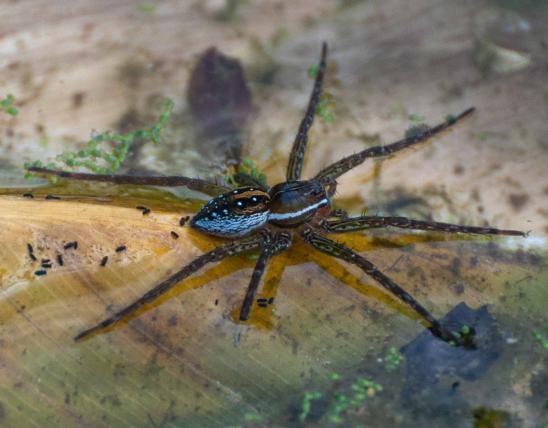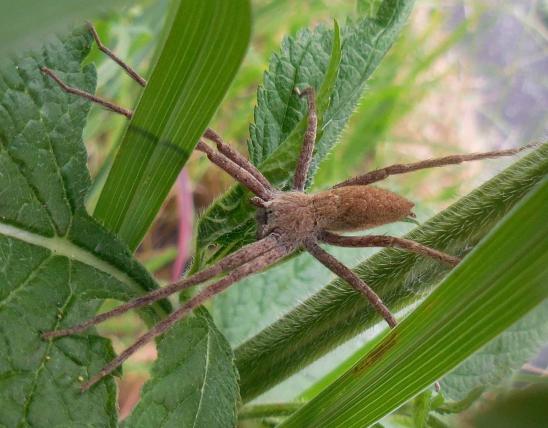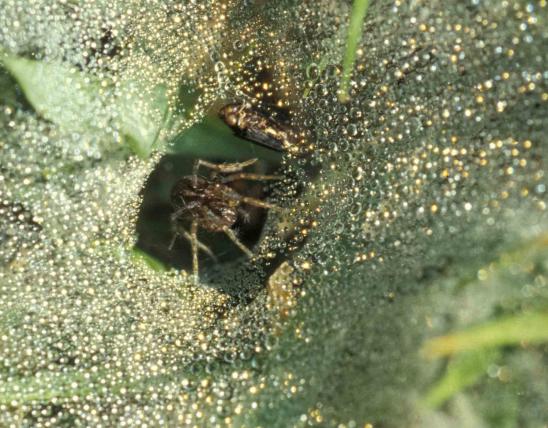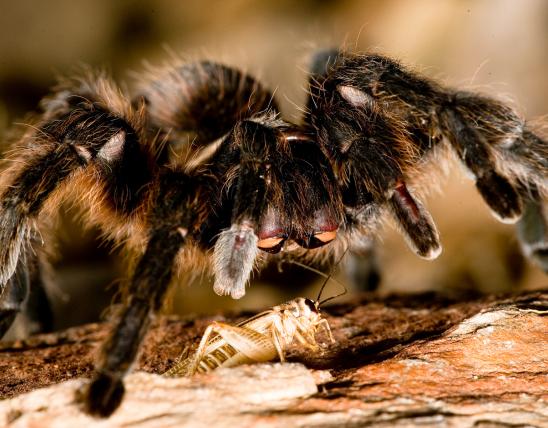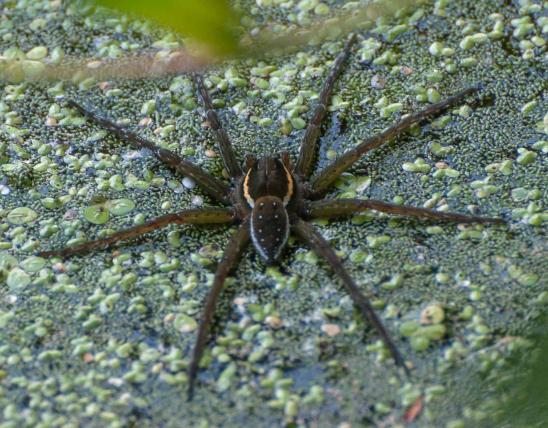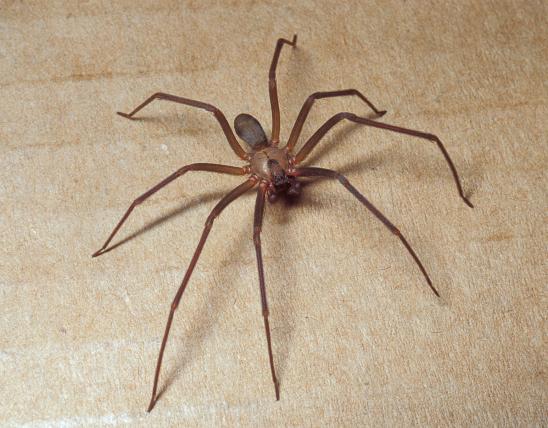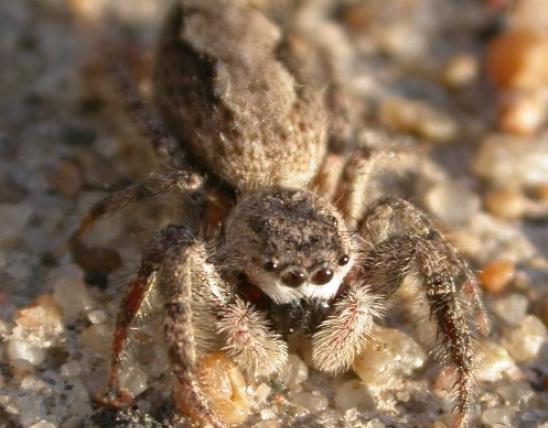
A fishing spider that is not necessarily found close to water, the dark fishing spider often evokes alarm because of its large size. It is often misidentified as a wolf spider, tarantula, barn funnel spider, or some other type. It is mottled black and brown, with few white markings. The abdomen has dark W-shaped patterns on the upper surface. The legs, often held almost straight out, are often banded with brown and a darker color. This is not a web-building spider; instead, it is usually seen walking on the ground.
Similar species: The striped fishing spider (D. scriptus) also has dark W-shaped markings atop the abdomen, but they are bordered with white Ws that extend unbroken across the top of the abdomen, while any white markings on the dark fishing spider’s abdomen border only the outer edges of each dark W.
Length (not counting legs): females can be ½–1 inch; males ¼–½ inch.
Statewide.
Habitat and Conservation
Although spiders in genus Dolomedes are all called “fishing spiders,” the dark fishing spider is not necessarily found near water. It is indeed common around rocks, shrubs, and other vegetation near permanent water, but it also occurs in drier wooded areas. Sometimes they are found around or under logs or stumps in people’s yards, where their large size elicits alarm.
Food
Insects and other small arthropods. Like other running spiders, the dark fishing spider simply pounces on its prey and bites it. Unlike web-building spiders, which usually have poor vision and locate their prey via vibrations within the web, running spiders typically have good vision.
Life Cycle
A 2013 study found that male dark fishing spiders spontaneously die when they copulate, meaning that the males can only ever mate but once. Because the females generally eat the deceased males, this death of the males both contributes to the health and well-being of their mate, as well as increases the number, size, and well-being of their offspring.
Human Connections
The scientific name for this species, “tenebrosus,” is from the Latin word for “dark” or “gloomy,” because there are so few light markings on this overall dark brown animal. “Tenebrosus” is the same basic word as “tenebrae,” the name used for the dark, solemn church services at the end of Holy Week, especially on Good Friday (commemorating the death of Jesus). Tenebrae services often involve a gradual extinguishing of candles, finishing with a darkened room.
Ecosystem Connections
To their prey, spiders are fierce predators, but being small themselves, they are also preyed upon by many other animals, such as reptiles and amphibians, birds, and mammals. The cryptic camouflage coloration and patterning no doubt help this spider to evade its predators as well as surprise the animals it’s hunting.


























